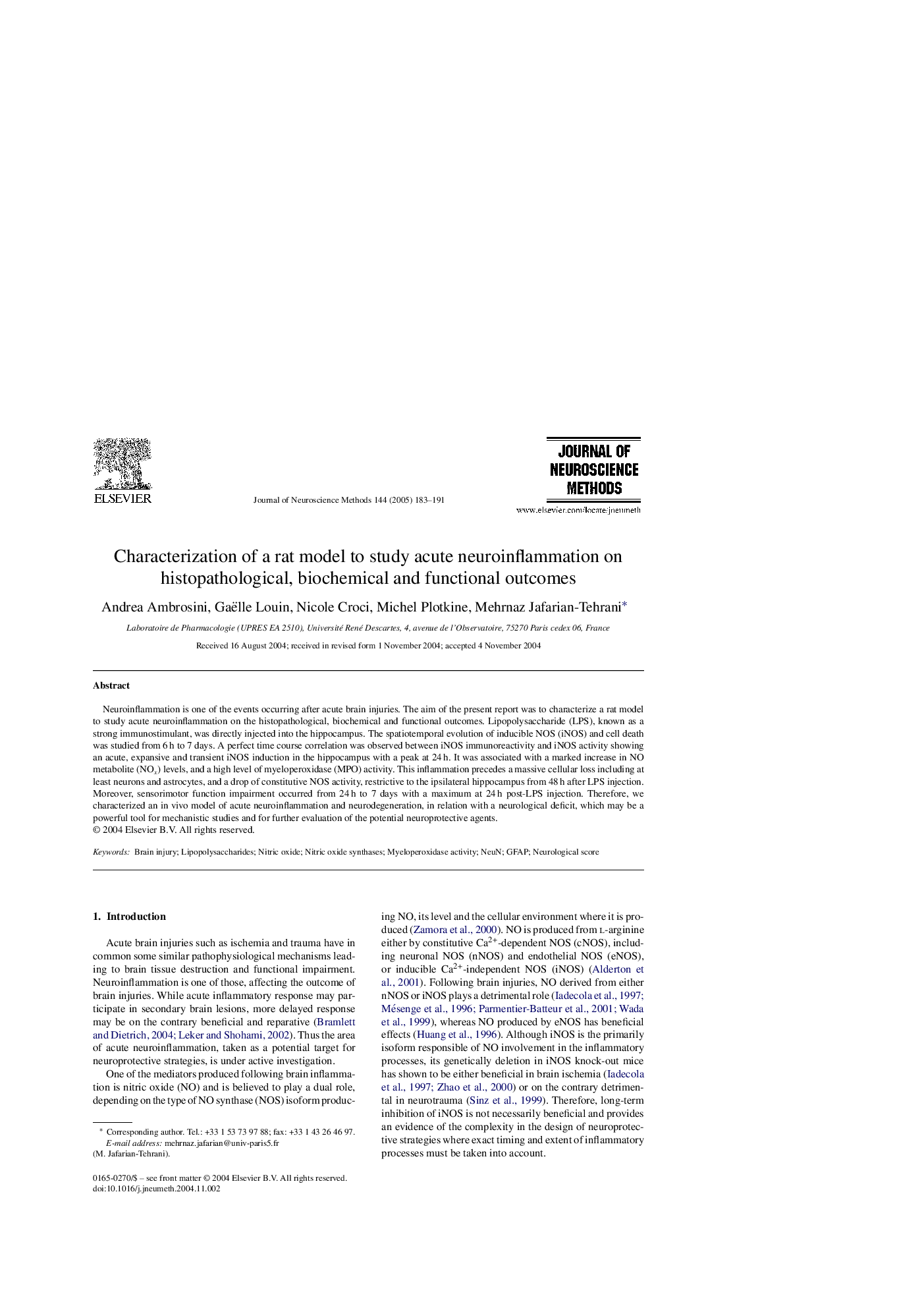| Article ID | Journal | Published Year | Pages | File Type |
|---|---|---|---|---|
| 9424252 | Journal of Neuroscience Methods | 2005 | 9 Pages |
Abstract
Neuroinflammation is one of the events occurring after acute brain injuries. The aim of the present report was to characterize a rat model to study acute neuroinflammation on the histopathological, biochemical and functional outcomes. Lipopolysaccharide (LPS), known as a strong immunostimulant, was directly injected into the hippocampus. The spatiotemporal evolution of inducible NOS (iNOS) and cell death was studied from 6Â h to 7 days. A perfect time course correlation was observed between iNOS immunoreactivity and iNOS activity showing an acute, expansive and transient iNOS induction in the hippocampus with a peak at 24Â h. It was associated with a marked increase in NO metabolite (NOx) levels, and a high level of myeloperoxidase (MPO) activity. This inflammation precedes a massive cellular loss including at least neurons and astrocytes, and a drop of constitutive NOS activity, restrictive to the ipsilateral hippocampus from 48Â h after LPS injection. Moreover, sensorimotor function impairment occurred from 24Â h to 7 days with a maximum at 24Â h post-LPS injection. Therefore, we characterized an in vivo model of acute neuroinflammation and neurodegeneration, in relation with a neurological deficit, which may be a powerful tool for mechanistic studies and for further evaluation of the potential neuroprotective agents.
Keywords
Related Topics
Life Sciences
Neuroscience
Neuroscience (General)
Authors
Andrea Ambrosini, Gaëlle Louin, Nicole Croci, Michel Plotkine, Mehrnaz Jafarian-Tehrani,
